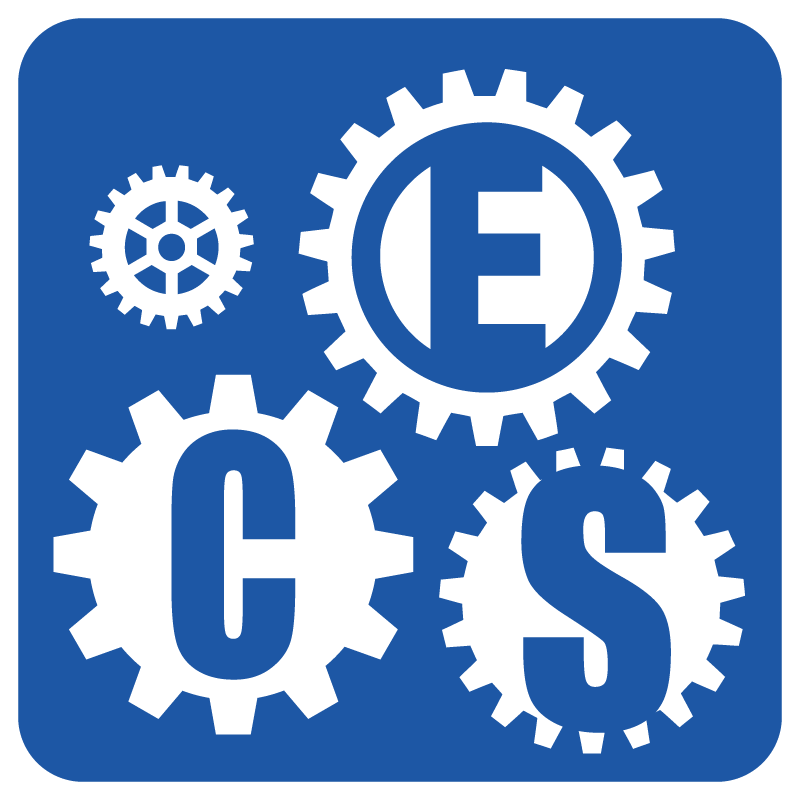REFERENCES
2. Mamdani EH, Assilian S. An experiment in linguistic synthesis with a fuzzy logic controller. Int J Man-Mac Studies 1975;7:1-13.
3. Takagi T, Sugeno M. Fuzzy identification of systems and its applications to modeling and control. In: IEEE Trans Syst, Man, Cybern 1985;8: 116–32.
4. Precup RE, Hellendoorn H. A survey on industrial applications of fuzzy control. Comput Industry 2011;62:213-26.
5. Pirovano M. The use of fuzzy logic for artificial intelligence in games. University of Milano, Milano 2012. Available from:
6. Russell SJ. Artificial intelligence a modern approach. Pearson Education, Inc.; 2010.
7. Silver D, Schrittwieser J, Simonyan K, et al. Mastering the game of Go without human knowledge. Nature 2017;550:354-59.
8. Lakhani AI, Chowdhury MA, Lu Q. Stability-preserving automatic tuning of PID control with reinforcement learning. Complex Eng Syst 2022;2:3.
10. Zhao E, Yan R, Li J, Li K, Xing J. AlphaHoldem: high-Performance artificial intelligence for heads-up no-limit poker via end-to-end reinforcement learning. In: Proceedings of the AAAI Conference on Artificial Intelligence. vol. 36; 2022. pp. 4689–97.
11. Shao K, Tang Z, Zhu Y, Li N, Zhao D. A survey of deep reinforcement learning in video games. arXiv preprint arXiv: 191210944 2019.
12. Chen J, Yuan B, Tomizuka M. Model-free deep reinforcement learning for urban autonomous driving. In: 2019 IEEE intelligent transportation systems conference (ITSC). IEEE; 2019. pp. 2765–71.
13. Walker O, Vanegas F, Gonzalez F, Koenig S. A deep reinforcement learning framework for UAV navigation in indoor environments. In: 2019 IEEE Aerospace Conference. IEEE; 2019. pp. 1–14.
14. Ouyang L, Wu J, Jiang X, et al. Training language models to follow instructions with human feedback. J Inf Process Syst 2022;35:27730-44.
15. Mundhenk TN, Chen BY, Friedland G. Efficient saliency maps for explainable AI. arXiv preprint arXiv: 191111293 2019.
16. Borys K, Schmitt YA, Nauta M, et al. Explainable AI in medical imaging: an overview for clinical practitioners–Beyond saliency-based XAI approaches. Eur J Radiol 2023:110786.
17. Holzinger A, Saranti A, Molnar C, Biecek P, Samek W. Explainable AI methods-a brief overview. In: xxAI-Beyond Explainable AI: International Workshop, Held in Conjunction with ICML 2020, July 18, 2020, Vienna, Austria, Revised and Extended Papers. Springer; 2022. pp. 13–38.
19. Mencar C, Alonso JM. Paving the way to explainable artificial intelligence with fuzzy modeling. In: Fuzzy Logic and Applications. Springer; 2019. pp. 215–27.
20. Viaña J, Ralescu S, Cohen K, Ralescu A, Kreinovich V. Extension to Multidimensional Problems of a Fuzzy-Based Explainable and Noise-Resilient Algorithm. In: Decision Making Under Uncertainty and Constraints: A Why-Book. Springer; 2023. pp. 289–96.
21. Pickering L, Cohen K. Genetic Fuzzy Controller for the Homicidal Chauffeur Differential Game. In: Applications of Fuzzy Techniques: Proceedings of the 2022 Annual Conference of the North American Fuzzy Information Processing Society NAFIPS 2022. Springer; 2022. pp. 196–204.
22. Pickering L, Cohen K. Toward explainable AI—genetic fuzzy systems—a use case. In: Explainable AI and Other Applications of Fuzzy Techniques: Proceedings of the 2021 Annual Conference of the North American Fuzzy Information Processing Society, NAFIPS 2021. Springer; 2022. pp. 343–54.
23. Fernandez A, Herrera F, Cordon O, del Jesus MJ, Marcelloni F. Evolutionary fuzzy systems for explainable artificial intelligence: Why, when, what for, and where to? IEEE Comput Intell Mag 2019;14:69-81.
24. Berenji HR. A reinforcement learning—based architecture for fuzzy logic control. Int J Approx Reason 1992;6:267-92.
25. Glorennec PY, Jouffe L. Fuzzy Q-learning. In: Proceedings of 6th international fuzzy systems conference. vol. 2. IEEE; 1997. pp. 659–62.
26. Er MJ, Deng C. Online tuning of fuzzy inference systems using dynamic fuzzy Q-learning. IEEE Trans Syst Man Cybern B Cybern 2004;34:1478-89.
27. Jamshidi P, Sharifloo AM, Pahl C, Metzger A, Estrada G. Self-learning cloud controllers: Fuzzy q-learning for knowledge evolution. In: 2015 International Conference on Cloud and Autonomic Computing. IEEE; 2015. pp. 208–11.
28. Kumar S. Learning of Takagi-Sugeno Fuzzy Systems using Temporal Difference methods. DigiPen Institute of Technology; 2020.
29. Mnih V, Kavukcuoglu K, Silver D, et al. Human-level control through deep reinforcement learning. Nature 2015;518:529-33.
30. Jang JSR. ANFIS: adaptive-network-based fuzzy inference system. IEEE Trans Syst, Man, Cybern 1993;23:665-85.
31. King SD. Explainable AI competition; 2023. Accessed on 2/15/2023. Available from:
33. Bellman R. A markovian decision process. Indiana Univ Math J 1957;6: 679–84. Available from:
35. Vinyals O, Babuschkin I, Czarnecki WM, et al. Grandmaster level in StarCraft Ⅱ using multi-agent reinforcement learning. Nature 2019;575:350-54.
36. Lin LJ. Self-improving reactive agents based on reinforcement learning, planning and teaching. Mach Learn 1992;8:293-321.
39. van Hasselt H, Guez A, Silver D. Deep reinforcement learning with double Q-learning. arXiv; 2015.
40. Polyak BT, Juditsky AB. Acceleration of Stochastic Approximation by Averaging. SIAM J Control Optim 1992;30:838-55.
41. Rosenstein MT, Barto AG, Si J, et al. Supervised actor-critic reinforcement learning. Learning and Approximate Dynamic Programming: Scaling Up to the Real World 2004: 359–80. Available from:
42. Yan X, Deng Z, Sun Z. Competitive Takagi-Sugeno fuzzy reinforcement learning. In: Proceedings of the 2001 IEEE International Conference on Control Applications (CCA'01)(Cat. No. 01CH37204). IEEE; 2001. pp. 878–83.
43. Jaakkola T, Jordan M, Singh S. Convergence of stochastic iterative dynamic programming algorithms. Adv Neural Inf Proces Syst 1993;6. Available from:
44. Melo FS. Convergence of Q-learning: a simple proof. Inst Syst Robot, Tech Rep 2001;1–4. Available from:
45. Cybenko G. Approximation by superpositions of a sigmoidal function. Math Control Signal Systems 1989;2:303-14.
46. Yarotsky D. Error bounds for approximations with deep ReLU networks. Neural Netw 2017;94:103-14.
47. Melo FS, Ribeiro MI. Q-learning with linear function approximation. In: Learning Theory: 20th Annual Conference on Learning Theory, COLT 2007, San Diego, CA, USA; June 13-15, 2007. Proceedings 20. Springer; 2007. pp. 308–22.
48. Papavassiliou VA, Russell S. Convergence of reinforcement learning with general function approximators. In: IJCAI. vol. 99; 1999. pp. 748–55. Available from:
49. Ying H. General Takagi-Sugeno fuzzy systems are universal approximators. In: 1998 IEEE International Conference on Fuzzy Systems Proceedings. IEEE World Congress on Computational Intelligence (Cat. No. 98CH36228). vol. 1. IEEE; 1998. pp. 819–23.
50. Bede B. Mathematics of Fuzzy Sets and Fuzzy Logic. Springer; 2013.
52. Benmiloud T. Multioutput Adaptive Neuro-Fuzzy Inference System. In: Proceedings of the 11th WSEAS International Conference on Nural Networks and 11th WSEAS International Conference on Evolutionary Computing and 11th WSEAS International Conference on Fuzzy Systems. NN'10/EC'10/FS'10. Stevens Point, Wisconsin, USA: World Scientific and Engineering Academy and Society (WSEAS); 2010. p. 94–98.







